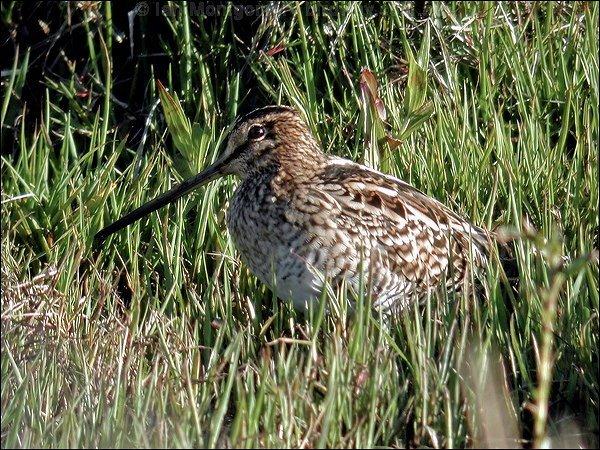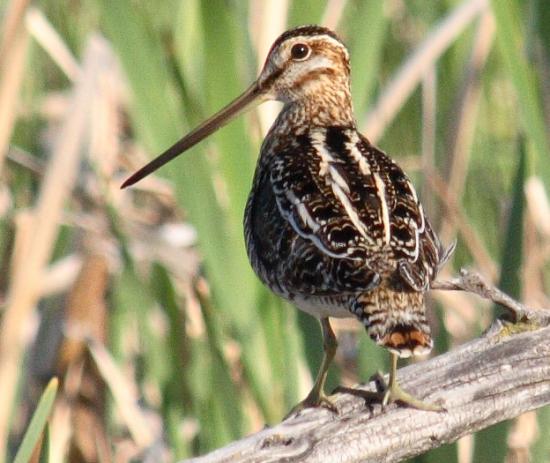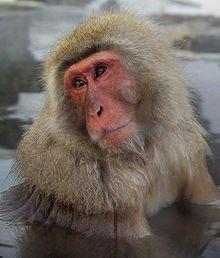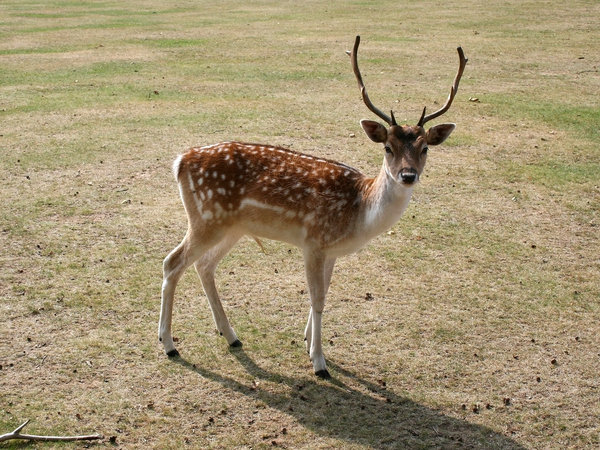 Japanese Snipe
Japanese Snipe
An associate of mine recently reminded me of another connection between Japan and Australia. The subject being Gallinago hardwickii, known locally as Latham’s’ Snipe or Japanese Snipe.This bird is migratory and flies all the  way from Japan to the east coast of Australia each year.
way from Japan to the east coast of Australia each year.
Of particular interest to us ‘locals’ is that one of its destinations is the ‘Australian Botanic Garden’, Mount Annan (formerly ‘Mount Annan Botanic Garden’). This world –class garden is well known to Campbelltown residents.
The ‘Campbelltown/Koshigaya Sister City Association’ exchange students and many Koshigaya parents and friends visit Campbelltown regularly. The snipe arrives in Australia sometime in August/September and commences its’ return flight around January/February the following year.
So much for birds for a moment …… what about animals?
I’m certain that most of us can quickly name some well-known even famous Aussie animals! e.g., Koala bears, Kangaroos, Wombats, Dingos, Tasmanian Devils, Bandicoots, Anteaters …… the list goes on. Well, how ‘bout well known even famous African animals? Let’s see, we have Elephants, Lions, Leopards, Cheetahs, Rhinoceros, Hippopotamus, Chimpanzee, Zebra, Hyena and Giraffe ….. Enough! I hear you cry, enough!
But, let’s be fair, quickly, Possums, name some well-known Japanese animals. You can’t? Well I couldn’t either! (No! Not Panda, that’s Chinese!).
O.K. I’ve done some research on the subject; here is a short list:

 Macaca fuscata (Japanese Macaque)
Macaca fuscata (Japanese Macaque)
Ah! Yes! When you see the photo of the Macaque, I’m quite sure you will say, ‘Yep, know that one! The monkey often shown sitting in hot springs.’Strongly built, and with a medium sized body (height around 570 mm and weight 11kg, the macaque has a life span of 28yrs for the male and 32yrs for the female. They are often referred to as the ‘Snow Monkey’. With thick brown to grey hair all over, the surprise is that the naked skin on the face and ..er.. the bottom is red (and don’t forget the beard)! The Macaque is principally found on the Japanese islands of Honshu (populations of Macaque have been found on the northern tip of Honshu making it the most northerly living primate in the world), Shikoku and Kyushu and live in evergreen and deciduous forests. Macaca are lucky not to be too fussy about the food they need to sustain them. They can eat many plant products (fruits) and also parts of plants such as leaves and fallen seeds. Their diet includes various plant species and sometimes marine animals such as crabs and fish. They can survive temperatures of minus 15 degrees Celsius, because of their thick protective ‘coat’, and during the coldest periods of the year some populations enjoy sitting in the naturally occurring hot spring heated by the Shiga Kogen volcano in the Nagano Mountains.
In closing this story on the wonderful Snow Monkey, I am delighted to pass on to you some observations on the macaques made by researchers at Koshima Island in the early 60’s. The scientists began the practice of leaving potatoes on the beach for the monkeys to eat. The monkeys happily accepted this food source but after a while researchers were surprised when a young female (approx. 18 months old) began to wash the sand and other ‘foreign’ bodies from the potatoes by rinsing them in the clear river water before eating. As observations continued she was seen later to dip the potatoes again into the salty water, presumably to give the food a bit more taste! Not long after other members of her group (Troop) began to copy her food preparation habits. This practice eventually passed from generation to generation!
O.K. …. Let’s leave the Snow Monkeys to their hot springs and tasty potatoes and move on to the next of our short-listed creatures ……….
 Cervus Nippon (Sika Deer)
Cervus Nippon (Sika Deer)
From ancient times the Sika deer have lived in the Kasuga Hills in the Nara prefecture. Anyone visiting the Todai-ji and Kasuga Shrine would have met the little deer and no doubt been encouraged to offer them some food, in fact they usually insist on it! You would no doubt remember buying some Shika-senbei crackers to satisfy them.The Sika deer found in Japan has a body length of 105-155cm and a shoulder height of 65-110cm. Their weight is approximately 25-110Kg and they have a life span of 10 years plus. Diet is supplied by Shrine visitors. Remember the senbei crackers you all fed them? Otherwise it’s usually leaves and grass!Of course there is a little more to the story.

The history of the Kasuga Shrine states that in 768 the mythical god, Takemikazuchi, arrived on a white deer to protect the newly built capital of Heijo-kyo (Nara City). From that time the deer were regarded as divine ‘heavenly animals’ and killing one of them was a capital offense and punishable by death until 1637. The divinity status was officially discontinued after World War 2. They are now deemed to be a ‘National Treasure’ and are fully protected by law.
Just to finish up, here’s a story about Kujo Kanezane, a Japanese nobleman and statesman from the 12th century. On a certain day in 1177 he took his daughter for her first visit to Kasuga Shrine and was inspired to write a note in his diary about something they both saw early one morning.
‘On our way to the shrine, many deer appeared in the morning darkness. This is a sign from the gods and a good omen. People say that when one encounters deer, he or she should get out of the carriage and bow to them’.
Note:
Kanezane-san is the author of the famous diary, “Gyokuyo” which carefully records this period in Japanese history.
Please enjoy the beautiful photos
John Holland/January 2013
